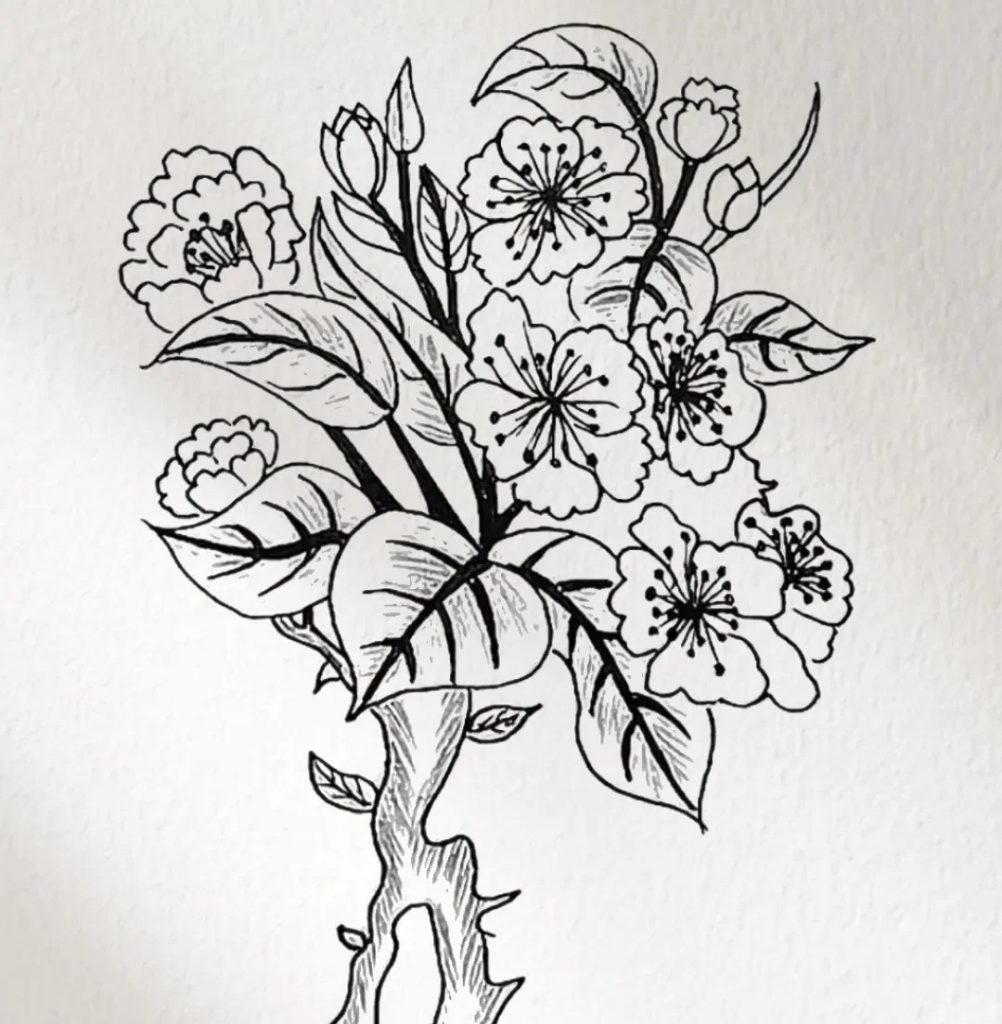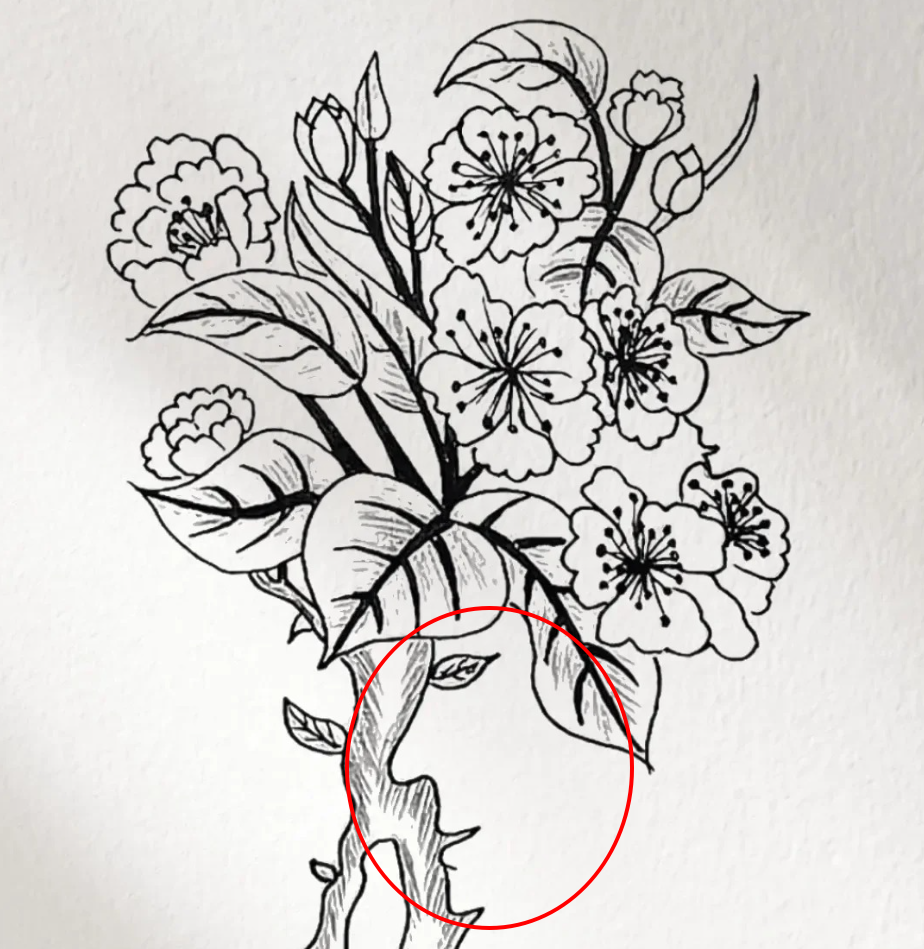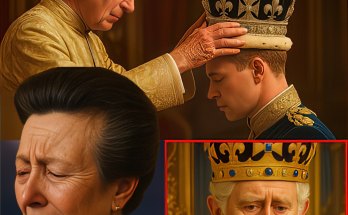The Timeless Beauty of Hand-Drawn Floral Art: Discovering the Charm of Nature’s Inked Wonders
When was the last time you paused to admire the simple elegance of a hand-drawn flower? In today’s fast-paced digital world, there’s something truly special about art created by hand—especially when it captures the delicate beauty of nature with just a pen and paper. The black-and-white floral drawing you see here is a perfect example of this timeless charm, inviting us to slow down, observe, and appreciate the intricate details that make flowers so captivating.
Let’s explore why hand-drawn floral art remains a beloved form of expression, how artists bring nature to life with ink, and why this classic style continues to inspire creativity and mindfulness in all of us.

Capturing Nature’s Elegance Through Simple Lines
At first glance, this drawing may seem straightforward, but take a closer look. The artist uses clean, flowing lines and careful shading to reveal the veins in each leaf and the delicate petals of blooming flowers. The contrast between thick and thin strokes adds depth and texture, making the blossoms appear almost lifelike despite the absence of color.
This approach highlights the artist’s keen observation skills—each leaf and bud is thoughtfully placed, mirroring the natural growth patterns found in real plants. It’s a reminder that beauty doesn’t always need to be loud or colorful; sometimes, simplicity is the most profound statement.

Why Black-and-White Floral Art Appeals to So Many
You might wonder why artists choose monochrome when flowers themselves burst with color. The answer lies in the power of contrast and imagination. Black-and-white sketches strip away distractions, allowing the viewer to focus on form, structure, and emotion. This minimalist style offers a fresh way to appreciate flowers—highlighting their shapes, curves, and fine details.
Moreover, monochromatic floral art is incredibly versatile. It suits everything from sophisticated tattoo designs and elegant stationery to home décor and therapeutic coloring books. This style’s universal appeal bridges the gap between tradition and modernity, making it accessible to art lovers across all ages and tastes.

How Artists Breathe Life Into Floral Illustrations
Creating a stunning floral drawing is more than just outlining petals. It involves understanding the plant’s anatomy and capturing its spirit. Artists often start by sketching the basic shapes, then gradually build up layers of lines and shadows to add volume and dimension.
In this drawing, you can see how the shading technique brings a tactile quality to the leaves, suggesting their softness and veins. The delicate dots and strokes in the flower centers mimic pollen and stamens, adding realism. Such attention to detail not only shows technical skill but also expresses the artist’s connection to nature’s elegance.
The Therapeutic Power of Drawing Flowers by Hand
Have you ever noticed how peaceful you feel when sketching or doodling flowers? There’s a reason for that. Engaging in hand-drawn art, especially floral subjects, acts like a meditation. It encourages mindfulness, patience, and focus, calming the mind and reducing stress.
Many art therapists recommend floral drawing as a creative outlet for expressing emotions and connecting with nature. Whether you’re a beginner or an experienced artist, picking up a pen and tracing petals can be incredibly rewarding and grounding.

Inspiring Creativity with Floral Ink Art
Floral drawings spark endless inspiration. They invite artists to experiment with styles—from hyper-realistic renderings to whimsical, abstract interpretations. You might even find yourself mixing ink with watercolors or digital tools to add a splash of color, enhancing the original monochrome base.
For hobbyists and professionals alike, floral art offers a playground for creativity. It challenges you to notice subtle details in everyday nature and to translate those observations into your unique artistic voice.
How to Start Your Own Floral Drawing Journey
Thinking about trying your hand at floral art? You don’t need fancy tools—just a simple pen or pencil and a bit of curiosity. Begin by observing real flowers around you. Notice the shapes of the petals, how the leaves curve, and where shadows fall. Start with loose sketches, focusing on capturing the essence rather than perfection.
Remember, every artist started somewhere, and every line you draw brings you closer to expressing your personal style. With patience and practice, you’ll find that floral drawings are not only beautiful but also a joyful way to connect with nature and yourself.

Conclusion: Embracing the Art of Nature’s Ink
The hand-drawn floral illustration you see is more than just a pretty picture—it’s a testament to the enduring bond between humans and nature. Through simple lines and thoughtful details, artists capture the elegance and spirit of flowers, offering us a moment of calm and inspiration.
Whether you’re admiring these drawings or creating your own, remember that beauty often lies in simplicity. Take a moment to slow down, look closely, and let the timeless charm of floral ink art brighten your day and spark your creativity.


